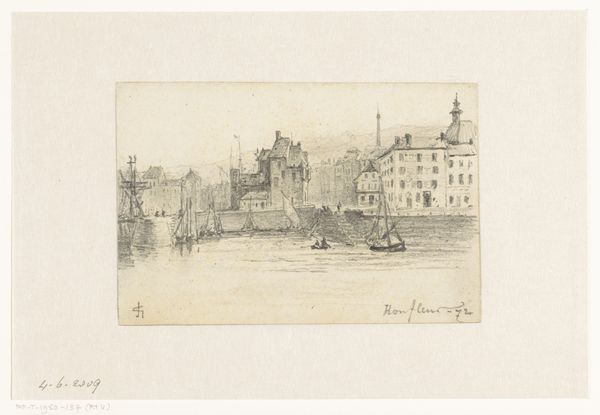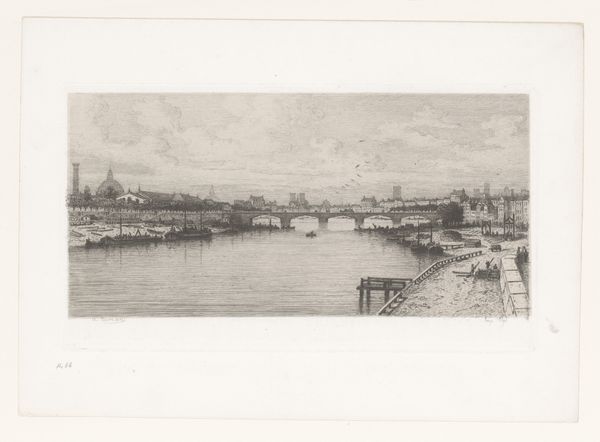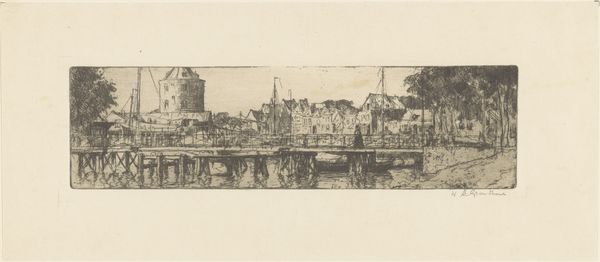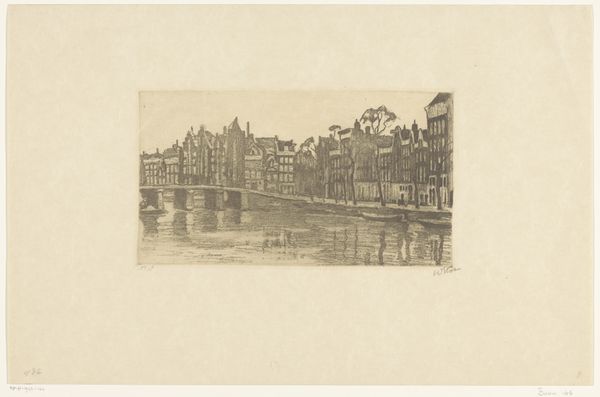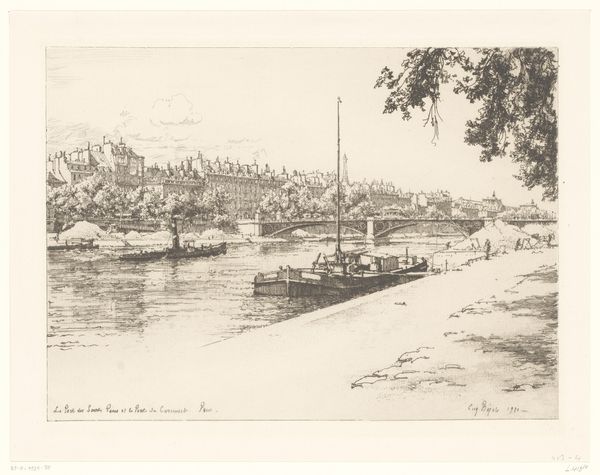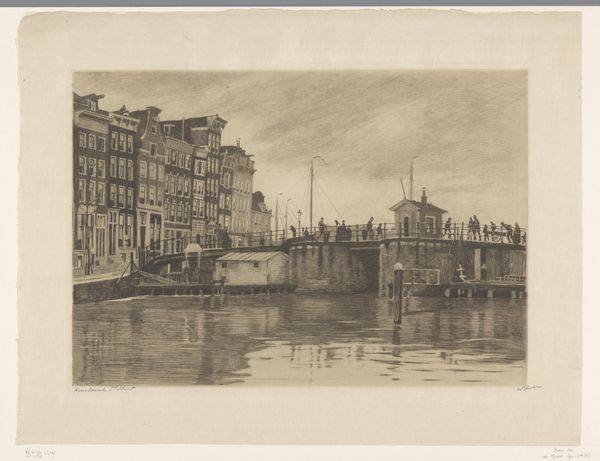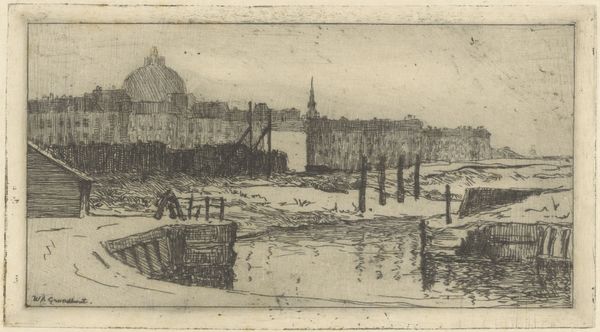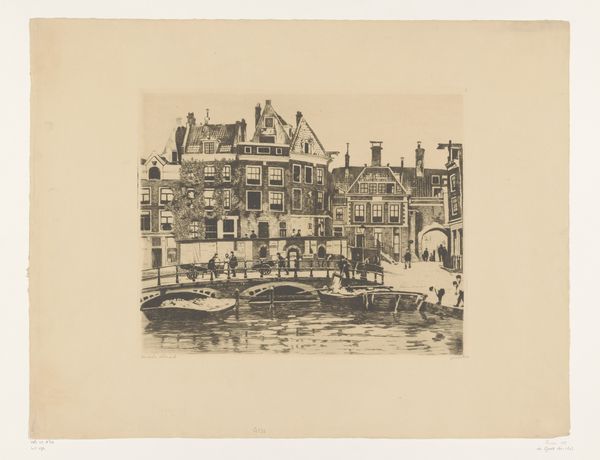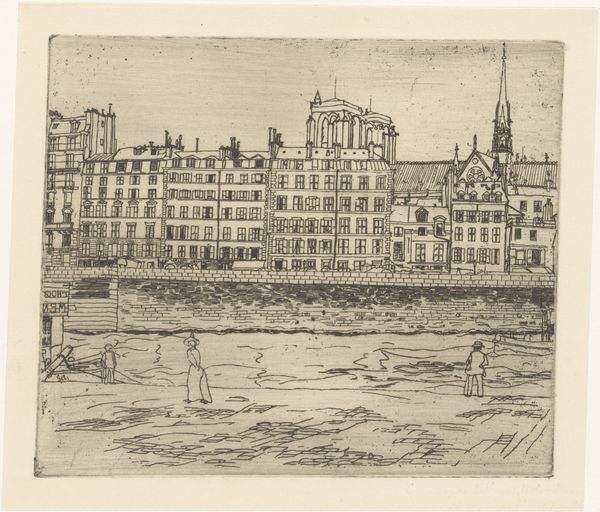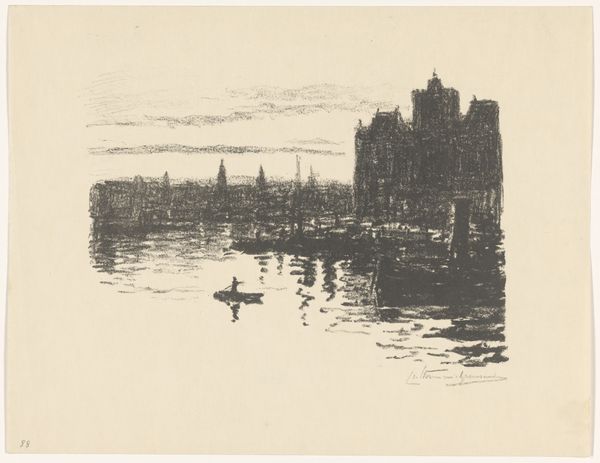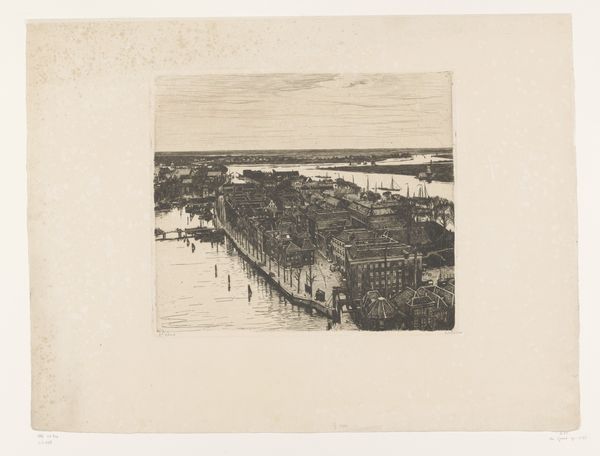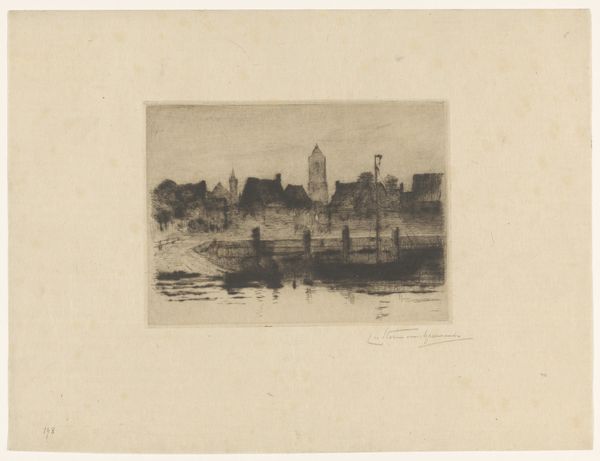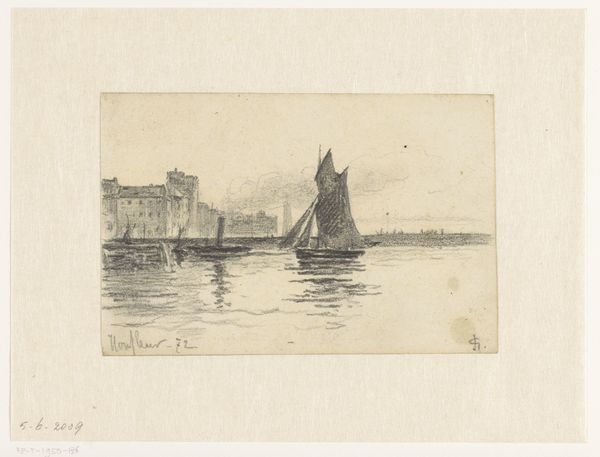
print, etching
#
dutch-golden-age
# print
#
etching
#
landscape
#
etching
#
cityscape
#
realism
Dimensions: height 141 mm, width 211 mm
Copyright: Rijks Museum: Open Domain
Willem Wenckebach created this print of the Amstel river using etching, a printmaking technique that democratized image production. The fine lines we see are the result of an elaborate, multi-stage process. First, Wenckebach would have coated a metal plate with a waxy, acid-resistant substance. Then, using a sharp needle, he scratched away the coating, exposing the metal. The plate was then submerged in acid, which bit into the exposed lines. The longer the plate stayed in the acid, the deeper and darker the lines would be in the final print. The plate is then inked and pressed onto paper, transferring the image. Etching allowed for detailed and expressive lines, capturing the reflections on the water. The printmaking process allowed for the wider distribution of this scene and the ability to create a larger number of 'original' artworks. This etching invites us to consider the value of labor, and how it complicates notions of originality and authenticity within artistic creation.
Comments
No comments
Be the first to comment and join the conversation on the ultimate creative platform.
